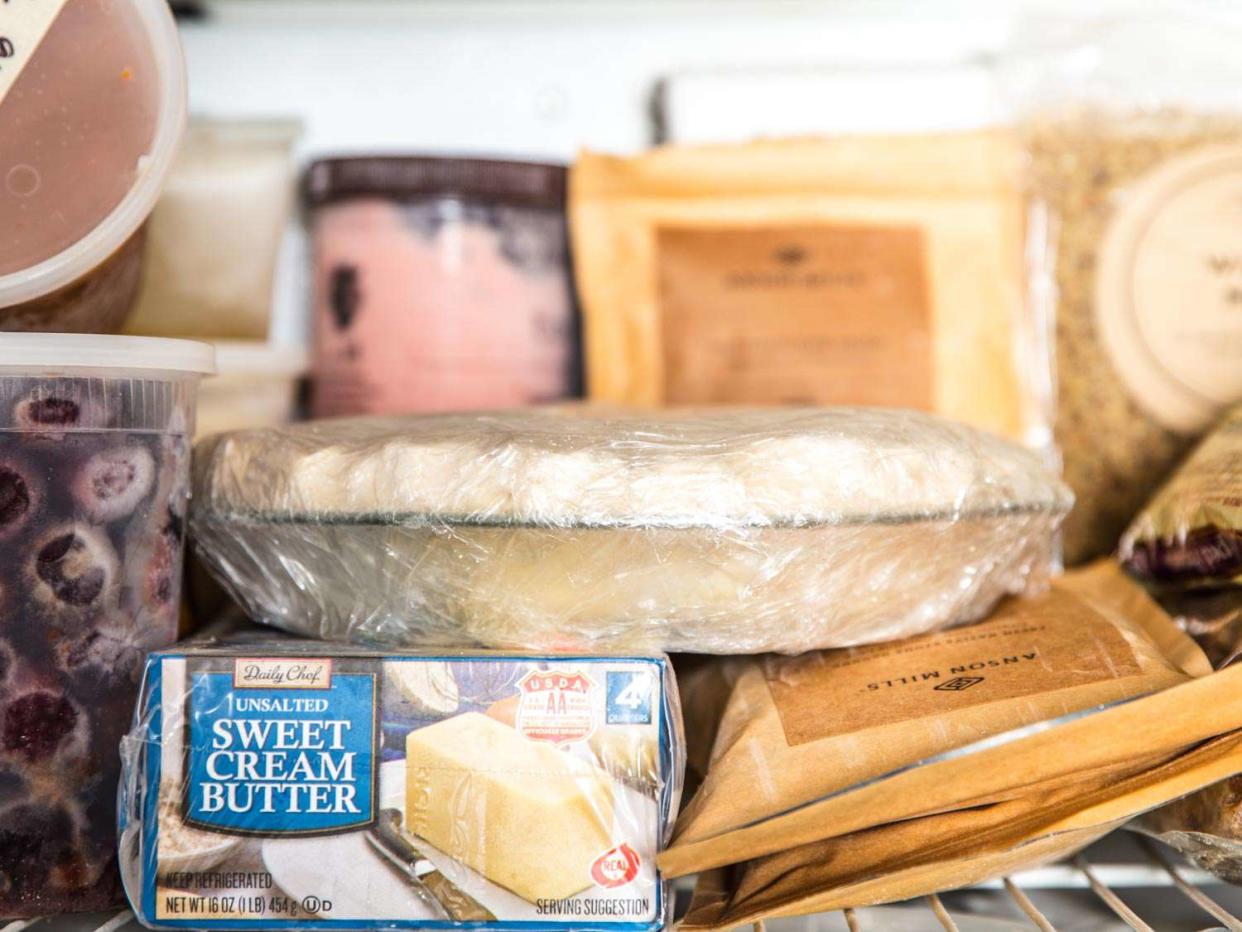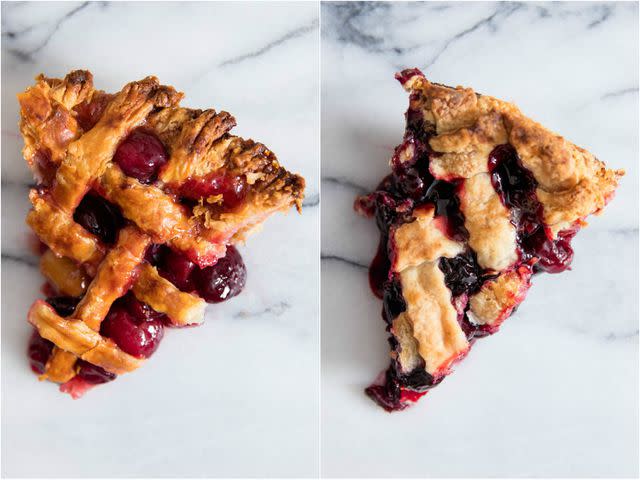How to Freeze and Thaw a Fresh-Fruit Pie

At the height of summer, when fresh fruit is at its prime, it's hard to resist the idea of saving some for later—especially when it's too hot to bake. While you can freeze fruit all by itself, if you have a pie pan to spare, there's nothing better than freezing the whole dang pie. And besides, in the midst of the holiday rush, I'm always relieved when I can fall back on a ready-made pie.
Fruit pies that have been frozen have a denser, jammier texture than those baked right out of the gate, but they still have the same thickness and consistency overall. This is also true of freshly baked pies made with frozen fruit—a great option if you don't have space to freeze a whole pie.

But if you do have the space (and extra pie plate) to spare, freezing the whole pie means you can whip it up at your leisure, rather than putting off that chore till a later date. The process is simple overall, but it's important to start with the right kind of dough, because not all recipes will freeze equally well.
The Best Dough and Dish for Freezing
Relatively lean and dry doughs are thirsty, eager to soak up moisture from fruit fillings over time, which makes for a soggy, wet crust. Doughs formulated with a higher proportion of butter and water are less absorbent, so they're better able to resist soaking up moisture, even after long-term exposure to a juicy layer of raw fruit filling. For that reason, I highly recommend my super-buttery Old-Fashioned Flaky Pie Dough; if you're baking a frozen (or really any) pie, it'll always come out flaky and crisp.
Using the right type of pie plate is helpful, too, and I highly recommend glass or disposable aluminum—pie pans affect how pie crust turns out more than you might expect.
How to Freeze a Whole Fruit Pie
With the right dough and equipment squared away, simply make your cherry pie, blueberry pie, or mixed-fruit pie as directed, and refrigerate it until the decorative border is cold and firm. Wrap your pie in several layers of plastic to minimize exposure to air, then stick it in the freezer. Plastic wrap can sometimes slip loose when cold, so I recommend using a layer of foil to help hold it in place. Bonus: It'll also provide a final, more impermeable barrier against odor absorption, particularly if your freezer is jam-packed with pungent savory things.
Baking a Frozen Pie
When you're ready to bake, unwrap the pie and rewrap it in a fresh layer of plastic—the old plastic may contain ice crystals that harbor funky odors, or can melt and give the top crust a blotchy appearance. Thaw it in the refrigerator to an internal temperature of about 40°F (4°C), and let the pie stand at room temperature until it warms to about 50°F (10°C) before baking. Use the recipe's visual cues as your guide, and bake it until the interior is bubbling-hot; this may take a little longer than the recipe suggests, so don't hesitate to cover the pie in foil if it's starting to look too brown.

As mentioned, freezing will give fruit pies a slightly jammier consistency, but the filling should be just as thick overall, and even more delicious when cold and dreary weather has you missing the fresh flavor of summer fruit.

